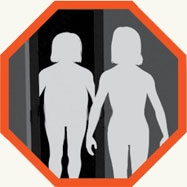68% of 15 year old girls are on a diet
Body dissatisfaction is identified as one of the top ranked issues of concern for young people. 70% of adolescent girls are dissatisfied with their body image.
The National Eating Disorders Collaboration has many more statistics on adolescents.
What is body image and self esteem?
Body image is linked to self esteem. Body image is the perception of how people see themselves. It is also about how they believe others perceive them. Body image can be influenced by thoughts, feelings, beliefs and attitudes.
There are many external factors that can influence self esteem and lead to an unhealthy body image particularly in young people, and these include:
- Comparing themselves to their friends, peers and family
- The media and advertising. This includes photo-shopped celebrities and models with super slim figures
- Cultural backgrounds
- Society in general
As a result, low body image creates a low self esteem which in turn, often brings an onset of eating disorders.
Eating disorders usually take place during adolescence
While eating disorders can occur in people of all ages and backgrounds, adolescence represents a peak period of onset for eating disorders. These include Anorexia Nervosa, Bulimia Nervosa and disordered eating.
READ MORE
- Eating disorders represent the third most common chronic illness for young females
- They also represent the second leading cause of mental disorder disability for young females
- Diabetic adolescents may have a 2.4-fold higher risk of developing eating disorders
- Adolescent girls who diet at a severe level are 18 times more likely to develop eating disorders within 6 months. This risk increases to a 1 in 5 chance over 12 months.
(Statistics obtained from the National Eating Disorders Collaboration)
Eating disorders are usually a result of a number of personal, environmental, psychological, biological and social factors. It also seems that adolescents are the most at-risk group of people in developing an eating disorder. This is due to a number of factors.
Adolescence is a period of intense change
As children become teenagers, their physical appearance changes. This brings out feelings of self consciousness, stress, confusion and anxiety. Their brains and hormones are changing. This affects adolescents mentally, emotionally and psychologically. There are also external factors. Children are changing schools, changing friends and peer groups. Many will start to develop an interest in the opposite sex.
Conclusion
Adolescents need help to overcome the many obstacles they will face. They also need help to deal with the enormous pressure surrounding them. Body image concerns, peer pressure, the media and advertising become a big deal for adolescents. These are serious risk factors in the development of an eating disorder. Subsequently, eating disorders often become a coping mechanism at this stage of their lives.
Our tools, strategies and activities
This workshop addresses the different risk factors that can contribute to negative body image and its consequences.
Our program is designed to provide young people with awareness, strategies and tools to encourage self-worth, body confidence and self esteem.
We offer a variety of relevant activities. These include role-play, videos, games and group work.
At workshop conclusion, students should be more empowered to
- Understand the influences that impact their body image and self esteem
- Understand the negative impacts of media on body image
- Identify the effects of stereotyping and ways to challenge it assertively
- Focus on the positive aspects in life and acceptance of themselves
- Build resilience and self esteem
- Understand body image and individuality
Contact us for more details
